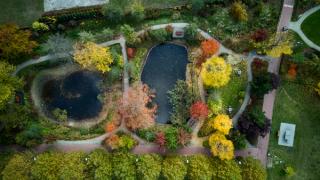
Leveraging ecologists in land development: What their expertise can bring to ESC and landscape architecture
by Kim Logan
View post

The UK government has recently published updates to the national Standards for Sustainable Drainage (SuDS), [1] which forms a step change for sustainable surface water drainage in England. This will reduce water pollution, reduce flood risk to communities, and improve nature.
The surface water drainage hierarchy, as outlined in the 2015 SuDS Manual, [2] prioritises managing rainfall runoff as close to its source as possible. The preferred sequence is: first, re-use the water on-site; if that’s not feasible, allow it to infiltrate into the ground. If infiltration isn’t possible, discharge should be directed to a nearby ditch, stream, or river. Only if these options are unavailable should runoff be discharged to a surface water sewer, and as a last resort, to a combined sewer that also carries foul drainage. Discharge to surface or combined sewers will only be allowed in the future if no other options are possible, and permission from the sewerage undertaker will be required.
Developers will be required to engage with the local planning authority early in the design process, to agree the design, construction, operation, and maintenance considerations. Planning permission may be refused in future for sites which do not include the ‘SuDS approach’ within the design.
Developers will need to provide evidence for this, such as infiltration testing results. Rainwater harvesting will need to be considered for all developments, particularly in seriously water-stressed areas in south and eastern England. The surface water drainage network will need to consider management of ‘everyday’ rainfall, and it is now a requirement that the first 5mm of rain will be managed onsite.
Surface water management needs to be integrated into the site layout, water supply, amenity, biodiversity, and climate resilience. Spaces used for SuDS devices, such as attenuation basins and wetlands, can be incorporated into the landscaping for a site, and dual purposed as play areas or open space.
The new standards will give a greater priority to nature-based drainage solutions such as grassed attenuation ponds, green roofs, and permeable pavements, rather than traditional ‘piped’ drainage solutions.This means that sustainable drainage has to be included in the design from the beginning, rather than at a later stage. The practical implication is that sufficient space will be required in the design for sustainable drainage. The SuDS features need to promote water re-use, amenity, and biodiversity benefits, as well as improving management of runoff and water quality. SuDS design also needs to allow for future maintenance and decommissioning.
In summary, by adopting the new statutory standards, SuDS will become a more significant planning consideration in the next five years, rather than being considered as an ‘add-on’ later in the process. The wider benefits of SuDS will contribute to making future developments better places to live, with more space for people and wildlife, and safer from flooding and drought.
We have recently designed a wetland for a proposed residential development in Norfolk, which was primarily for water quality, but provided multiple benefits such as landscaping and ecological improvements, resulting in a better quality of life for the future residents.
SLR provides a number of environmental and planning services which can help integrate high quality SuDS features into site design from the start, such as hydrology, flood risk assessment, landscape architecture, and ecology. We can contact the planning authorities at an early stage, to arrange an inception meeting to discuss the best ways to integrate sustainable drainage into site masterplanning in a way that will also enhance flood risk, placemaking and Biodiversity Net Gain (BNG).
------------------

by Kim Logan

by Michelle Gluck, Graeme Precious

by Jessica Barua